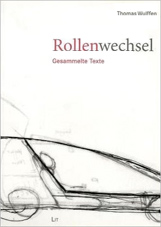Questions, questions...
6. Januar 2010 / Eingestellt von thw um 18:45 /
The category of “contemporary art” is not a new one. What is new is the sense that, in its very heterogeneity, much present practice seems to float free of historical determination, conceptual definition, and critical judgment. Such paradigms as “the neo-avant-garde” and “postmodernism,” which once oriented some art and theory, have run into the sand, and, arguably, no models of much explanatory reach or intellectual force have risen in their stead. At the same time, perhaps paradoxically, “contemporary art” has become an institutional object in its own right: in the academic world there are professorships and programs, and in the museum world departments and institutions, all devoted to the subject, and most tend to treat it as apart not only from prewar practice but from most postwar practice as well.
Is this floating-free real or imagined? A merely local perception? A simple effect of the end-of-grand-narratives? If it is real, how can we specify some of its principal causes, that is, beyond general reference to “the market” and “globalization”? Or is it indeed a direct outcome of a neoliberal economy, one that, moreover, is now in crisis? What are some of its salient consequences for artists, critics, curators, and historians—for their formation and their practice alike? Are there collateral effects in other fields of art history? Are there instructive analogies to be drawn from the situation in other arts and disciplines? Finally, are there benefits to this apparent lightness of being?1
fragte Hal Foster in einem Beitrag für das e-flux journal. Ein Heft ist schon erschienen und jetzt ist ein weiteres Heft heraus gekommen.
Zu lesen hier.



Keine Kommentare:
Kommentar veröffentlichen